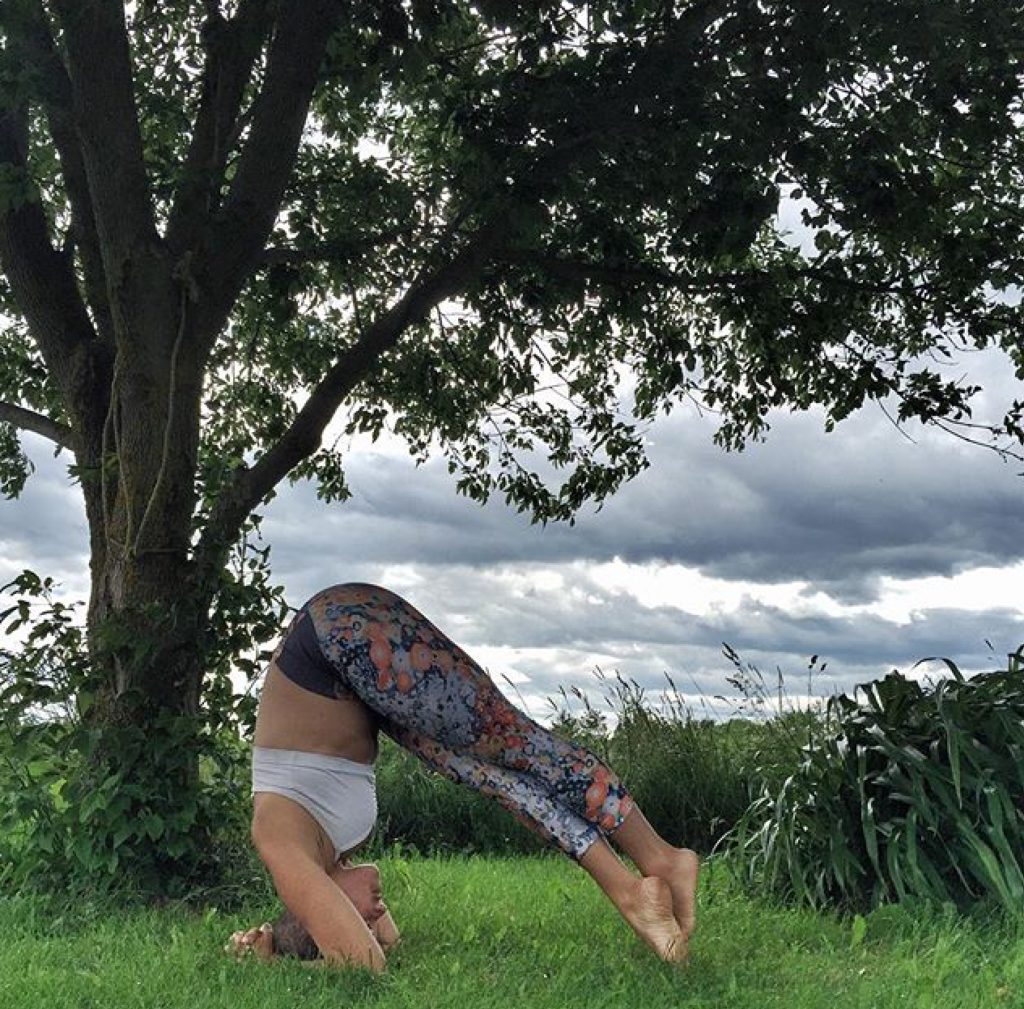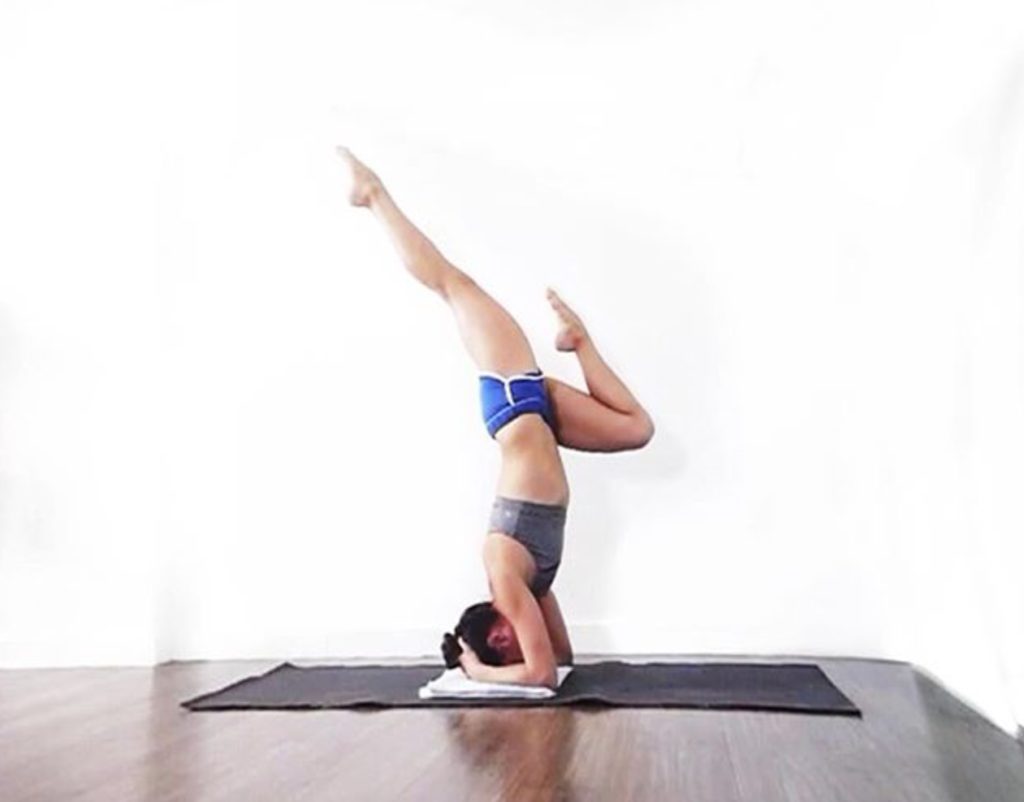Sirasana in yoga is a headstand pose. Sir, pronounced ‘seeer’ means head, and asana means pose, therefore Sirasana. A favourite pose for those yogis who love inversions, Sirasana has many benefits, allows us to conquer fear, and to find balance in our Sea of Yang.
As with all yoga poses, Sirasana teaches us some important life lessons. The normal human fear of falling is overcome when we attempt to do Sirasana. First carefully cradling our heads and trying it against the wall, letting our feet fly off the earth and over our heads can be intimidating, and especially so the older you get.
Slowly as our confidence and abilities grow we accomplish the complete Sirasana, though it takes patience and practice. The qualities of patience and practice are something we must all adhere to as we study yoga.

Sirasana is a difficult pose that takes considerable practice and patience. Yogi, Nikki says, “This king of poses is the one I got hurt in a year ago this month, because my ego told me to stay up in it for more than 5 minutes, because that would be more than everyone else in the room. I did this even though my body was screaming at me that something wasn’t quite right with my alignment. But I wanted, I needed, I ignored, I strived, I competed…I listened to that voice that told me, irrationally, that this pose made me a better version of myself that the me who couldn’t do it or hold it. “
“To be honest, releasing this pose, being able to practice yoga in a room full of people and ignore my ego now and not take it, that has been the single most amazing experience I’ve had with it. I think that’s when headstand truly empowered me and taught me to trust my instincts, finally.”
There is no room for ego in yoga. It takes patience, practice and a unique understanding of your own self. Aside from teaching us lessons in life and allowing us to develop specific qualities that enable good living, Sirasana also provides great physical benefits when done right and carefully.

Yogi Chelsea Wise tells us that Sirasana, “is a great way to test if the governing vessel (the meridian that runs the centre of the body and is responsible for connecting the uterus in women to the kidneys, heart, and brain), is healthy and clear.”
“If the acupressure points on the top of the head are painful when entering headstand it can indicate this yang energy meridian needs balancing.”
“Headstand is a perfect way to stimulate these points, especially if combined with deep breathing to release and free up the channel. It is known as the “Sea of Yang”, meaning if this channel is flowing and open to receive from the intelligent masculine force all around, you will feel energized, and vital.”
Chelsea is energized and vital as she reflects on an early memory of doing Sirasana, “The reason this pose means something significant to me is that it reminds me of my childhood. It reminds me of the times I spent playing with my sister upside down on the living room floor. We would plant our head and hands into the carpet and crawl our knees up onto our bent elbows. Then we would effortlessly fold our legs in full lotus and giggle and giggle. Headstand has always turned back the clock for me.”

As we move towards our childlike state perhaps we can let go of that fear and achieve Sirasana. Not only do we overcome our fear of falling, but achieving a headstand provides us with a sense of accomplishment, allows us to understand that sometimes taking risks provides great benefits, and that balance can be discovered through our Sea of Yang. Balance also means we understand our own limits, find our own modifications, and let go of ego. How empowering!
Join in the #empoweredyogis yoga challenge, happening this month on Instagram, and follow Chelsea Wise (@Chelsea_Wise_) there.
As with any exercise program you must know yourself and understand your own health before attempting.




